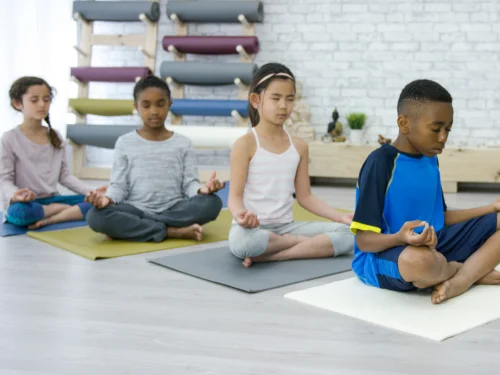What Is Child-Rearing? (Parenting Styles and Practices Explained)

Yes—finger plays, clapping games, and dance routines that use hand gestures all help. Combine rhythm and repetition for deeper learning.
Send home simple activity ideas, kits, or worksheets. Offer short instructions and encourage family involvement. Regular practice builds lasting progress.
Try origami, sticker scenes, stringing pasta, or painting with Q-tips. Crafts that use small pieces build precision and control.
Child-rearing, also called parenting, is the process of guiding, teaching, and nurturing a child from birth to adulthood. It involves more than feeding and clothing a child—it’s about helping them grow emotionally, socially, and mentally into healthy, capable adults.
Every culture and family raises children differently, but most parents share a common goal: raising happy, responsible, and independent kids who can make good choices and care for others.
What Does “Child-Rearing” Mean?

Child-rearing is the combination of all the ways parents or caregivers support a child’s development. This includes:
- Providing love, safety, and emotional support
- Teaching values, manners, and social skills
- Guiding children through rules, routines, and boundaries
- Encouraging learning, curiosity, and responsibility
Effective child-rearing is about balance—offering warmth and affection while also setting firm but fair limits.
The 4 Main Parenting Styles
.webp)
Psychologists have identified four main child-rearing or parenting styles. These styles differ based on how much love, structure, and control a parent provides.
1. Authoritative Parenting (Balanced and Supportive)
This style combines warmth with firm guidance.
- Parents explain rules clearly and listen to their children’s opinions.
- Kids raised this way often grow up confident, independent, and responsible.
Example: A parent sets a bedtime but allows the child to choose which book to read before bed.
2. Authoritarian Parenting (Strict and Demanding)
This style focuses on obedience and rules without much room for discussion.
- Parents expect children to follow directions “because I said so.”
- Kids may behave well but can become anxious or fearful of mistakes.
Example: A parent tells a child to eat all their food without explaining why or listening to their opinion.
3. Permissive Parenting (Lenient and Overly Kind)
Permissive parents are very loving but rarely enforce rules.
- Children can make most of their own decisions.
- These kids often feel loved but may struggle with self-control or discipline later in life.
Example: A child refuses to do homework, and the parent allows it to avoid an argument.
4. Neglectful Parenting (Uninvolved or Distant)
Neglectful parents provide basic needs but little emotional support or guidance.
- Children raised this way often learn independence early but may feel lonely or insecure.
Example: A parent is always busy or distracted and rarely spends quality time with their child.
Positive Child-Rearing Practices
.webp)
While no parent is perfect, research shows that authoritative parenting—a balance of love and structure—tends to produce the best long-term results.
Here are some effective child-rearing techniques that help build strong parent-child relationships:
1. Active Listening
Take time to truly hear your child’s thoughts and feelings.
- Kneel to their level, make eye contact, and listen without interrupting.
- This builds trust and helps kids feel valued.
2. Positive Reinforcement
Encourage good behavior by noticing and praising it.
- Example: “I’m proud of how you shared your toys today!”
- Praise helps children repeat good behavior because they feel appreciated.
3. Constructive Choices
Give your child safe options so they learn responsibility.
- Example: “Do you want to brush your teeth before or after putting on pajamas?”
- Choices help children build decision-making skills and confidence.
4. Natural and Logical Consequences
Let children experience real outcomes of their actions.
- Natural consequence: A child forgets their coat and feels cold—next time, they remember.
- Logical consequence: If they break a toy, they help fix it or save money for a new one.
5. Time-Ins Instead of Time-Outs
A time-in means staying with your child during difficult emotions, helping them calm down and talk it through.
This approach teaches emotional regulation and problem-solving instead of isolation.
Cultural Differences in Child-Rearing
.webp)
Child-rearing looks different around the world because culture shapes how people view family, respect, and success.
- Japan: Children gain independence early, often running small errands alone.
- Scandinavia: Kids spend lots of time outdoors, even in winter, to build health and resilience.
- The Netherlands: Parents focus on happiness and balance rather than academic pressure.
- United States: Independence and self-confidence are key goals of parenting.
Each approach reflects what a culture values most—but all share one foundation: love and care.
Modern Parenting Programs That Support Families
.webp)
Today, parents can access helpful programs that teach effective and compassionate ways to raise children:
- Conscious Discipline: Focuses on connection, empathy, and problem-solving.
- Love and Logic Parenting: Encourages responsibility through natural consequences.
- Active Parenting: Helps parents build communication and self-esteem in kids.
These programs emphasize emotional connection, self-control, and lifelong learning—for both parents and children.
You May Also Like: 6 Different Types of Attention Every Parent Should Know
Why Child-Rearing Matters
.webp)
The way we raise children shapes the kind of adults they become—and the kind of world we live in.
Through consistent love, respect, and guidance, parents can nurture empathy, resilience, and confidence in their children.
Good child-rearing isn’t about being perfect—it’s about showing up, listening, and learning together every day.
You May Also Like: When Undisciplined Kids Grow Up: Why Habits Matter
FAQs About Child-Rearing
1. What is the main goal of child-rearing?
The main goal is to raise a healthy, confident, and caring individual who can think, feel, and act responsibly.
2. Which parenting style is the best?
The authoritative style is most recommended—it blends structure, empathy, and open communication.
3. Can parenting styles change?
Yes. Parents can adjust their approach as they learn new techniques or as their child’s needs change.
4. Why do cultures have different child-rearing styles?
Cultural values influence what families believe is most important—independence, respect, obedience, or cooperation.
5. What matters most in raising a child?
Consistency, love, and open communication. Children thrive when they feel safe, heard, and supported.
You May Also Like: When Do Kids Have Growth Spurts? Easy Guide




